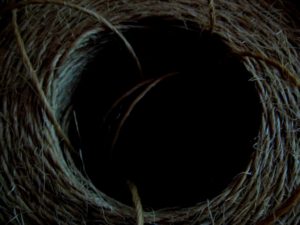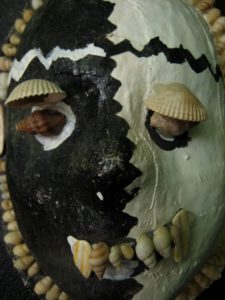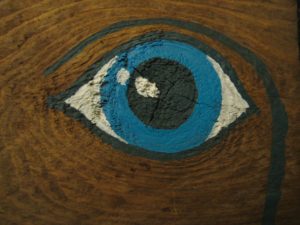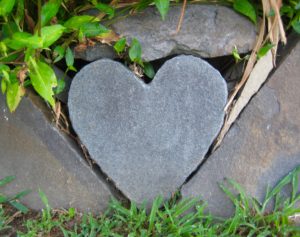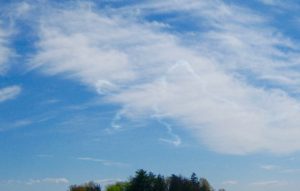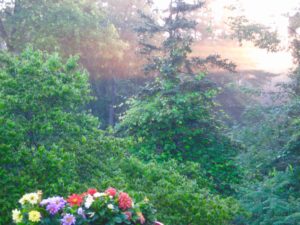
– Photo by Jan Ketchel
Freud rightly identified early childhood as the stage of Primary Narcissism. We are born into this life with but the seed of an individual personality planted in the fertile soil of this world, what the Hindus identified as the first chakra, Muladhara, at the location of the perineum at the base of the spine. The spark of awareness at this stage, amidst the vast unknown dark soil of this world, is simply the needs of the body and the relief of those needs from somewhere. The infant can hardly differentiate itself and its needs from the world and from who attends to its needs. All is experienced as one narcissistic Me.
For Freud, this need state evolves into the Pleasure Principle, the prime mover of all stages of life through its myriad of mature civilized permutations, what Freud came to understand as civilization and it discontents, ultimately a variety of sublimations under which lies the libido of narcissism.
Jung introduced the two primary trends in nature, introversion and extroversion. In human nature the introvert looks to the inner self as the final arbiter of truth and rightness. By contrast, the extrovert is open more to the greater external reality and adapting to it as the basis for survival. From this perspective, the introvert, though perhaps more self-reliant, can also be seen as more self-involved or narcissistic. The extrovert, more keenly in tune with the needs of others, can on the one hand be seen as more related to the other yet on the other hand self-negating or codependent. The truth is, however, that both natural introverts and extroverts are likely to be equally driven by narcissism as long as their maturity is limited to the first three chakras: Muladhara, Svadhishthana, and Manipura.
These first chakras, in fact, all exist in the realm of narcissism. Despite outer appearances these three chakras are extremely self-involved, essentially in establishing the ego in the areas of basic security, sexuality, and individual power. These three chakras are bathed in narcissism at their core, simply a fact of development at those stages. These are necessary chakras in the foundation of the ego/body self, which then serve as the ultimate launching pad for the discovery of the spirit self in the fourth chakra, Anahata, located in the region of the heart.
It is only at the level of the flame of consciousness at the heart where an individual is truly freed from the dominance of the pleasure principle, the primary motivator of the animal part of the self, which dominates the first three chakras. It is only at the level of the heart that an individual can grant another autonomy and independent value, separate from their value as a need-fulfilling object, which is the perspective of the world at the first three chakras. At the lower levels, whether introverted or extroverted, the outside world is colored through the lens of what’s in it for Me, whether that be in the form of food, sex, or power and control.
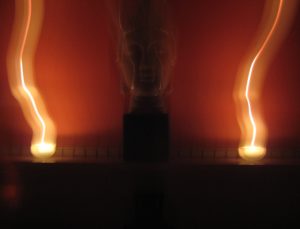
– Photo by Jan Ketchel
However, once kundalini energy rises to the level of the heart, narcissism undergoes a mighty transformation, as one becomes truly capable of love for another. While narcissism once narrowed the energy of love to the self and how the world could support it, true love at the heart level grants the other and their needs a place in one’s own heart. Thus, at the heart center the way of narcissism becomes the way of love. Of course, the body is included in this new mix, but it must acquiesce to the greater objective need the heart accesses, beyond the narcissistic orbit of Me only.
The journey from the lower chakras to the heart center is many-faceted, involving many explosions and implosions as the world increasingly refuses to gratify the entitled expectations of the narcissistic self. This may result in repeated cycles of failed relationships, but over time, with knowledge accrued, it eventually becomes clear that the main culprit behind the failures is the compulsive drives of the narcissistic self.
With this point of self awareness one learns to contain the leaking of emotional frustration in the form of blame and develop an introspective posture that reveals the prejudices of the narcissistic worldview and begins to mold the objectivity of the heart center that acts from the place of truth vs blind need. And with this accomplishment, narcissism transforms and finds its way to true love.
Transforming,
Chuck


